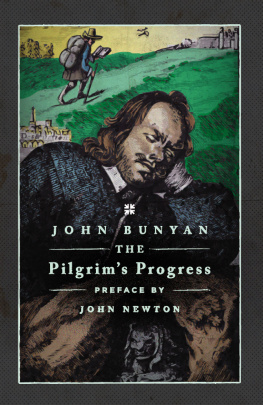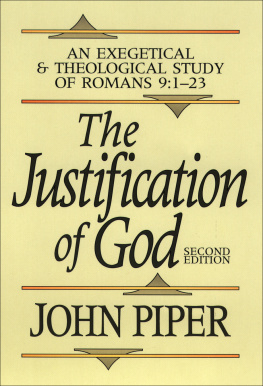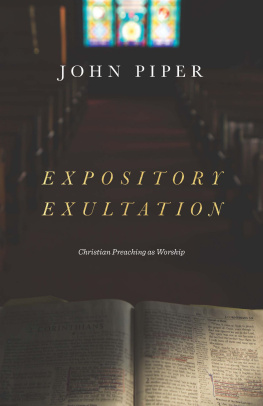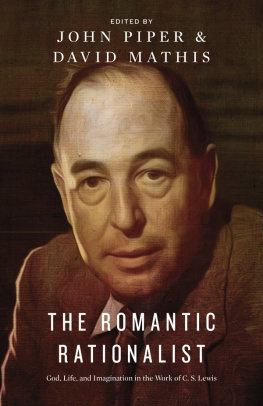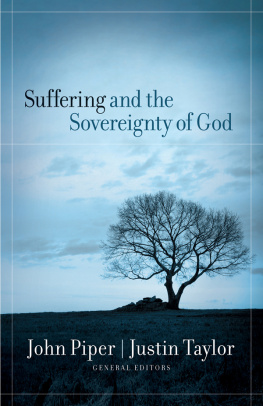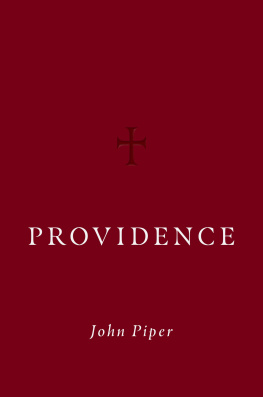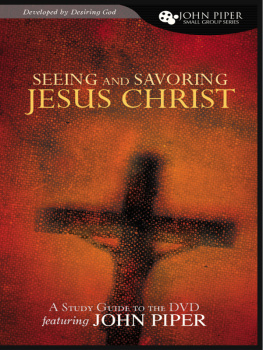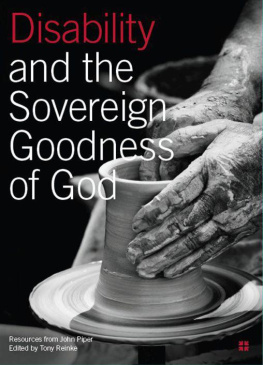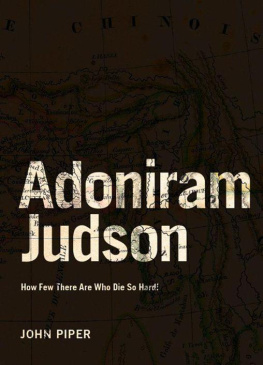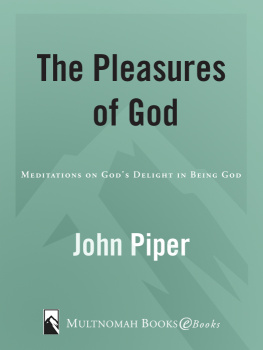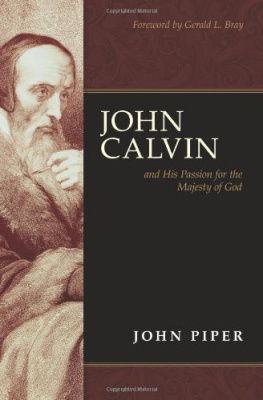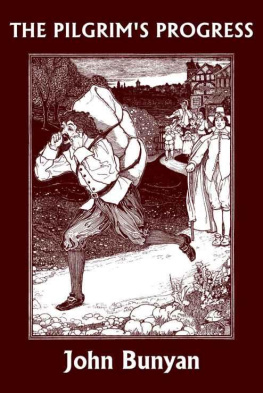John Piper - The Pilgrim’s Progress
Here you can read online John Piper - The Pilgrim’s Progress full text of the book (entire story) in english for free. Download pdf and epub, get meaning, cover and reviews about this ebook. year: 2013, publisher: Desiring God, genre: Religion. Description of the work, (preface) as well as reviews are available. Best literature library LitArk.com created for fans of good reading and offers a wide selection of genres:
Romance novel
Science fiction
Adventure
Detective
Science
History
Home and family
Prose
Art
Politics
Computer
Non-fiction
Religion
Business
Children
Humor
Choose a favorite category and find really read worthwhile books. Enjoy immersion in the world of imagination, feel the emotions of the characters or learn something new for yourself, make an fascinating discovery.
- Book:The Pilgrim’s Progress
- Author:
- Publisher:Desiring God
- Genre:
- Year:2013
- Rating:4 / 5
- Favourites:Add to favourites
- Your mark:
- 80
- 1
- 2
- 3
- 4
- 5
The Pilgrim’s Progress: summary, description and annotation
We offer to read an annotation, description, summary or preface (depends on what the author of the book "The Pilgrim’s Progress" wrote himself). If you haven't found the necessary information about the book — write in the comments, we will try to find it.
The Pilgrim’s Progress — read online for free the complete book (whole text) full work
Below is the text of the book, divided by pages. System saving the place of the last page read, allows you to conveniently read the book "The Pilgrim’s Progress" online for free, without having to search again every time where you left off. Put a bookmark, and you can go to the page where you finished reading at any time.
Font size:
Interval:
Bookmark:
THE PILGRIMS
PROGRESS
2014 Desiring God
Published by Desiring God
Post Office Box 2901
Minneapolis, MN 55402
www.desiringGod.org
PERMISSIONS
You are permitted and encouraged to reproduce and distribute this material in any format provided that you do not alter the wording in any way and do not charge a fee beyond the cost of reproduction. For web posting, a link to this document on our website is preferred. Any exceptions to the above must be approved by Desiring God.
Please include the following statement on any distributed copy:
Desiring God. Website: desiringGod.org
Cover Design: Peter Voth
Typesetting: Ryan Leichty
Unless otherwise indicated, Scripture quotations are from the ESV Bible (The Holy Bible, English Standard Version ), copyright 2001 by Crossway. Used by permission. All rights reserved. All emphases in Scripture quotations have been added by the author or editor.
Material for this book has been taken from The Hidden Smile of God by John Piper, 2001. Used by permission of Crossway, a publishing ministry of Good News Publishers, Wheaton, IL 60187, www.crossway.org. For more biographies from John Piper, see Crossways series, The Swans Are Not Silent.
Leland Ryken
The book that became known to posterity as The Pilgrims Progress is a Christian classic whose importance is impossible to overstate. For more than two centuries after its first publication, The Pilgrims Progress ranked just behind the King James Bible as the most important book in evangelical Protestant households. The book has been translated into some two hundred languages, including eighty in Africa. Any book that has achieved such popularity has a very large claim to our attention.
FACTS OF PUBLICATION
The Pilgrims Progress actually has two publication dates, corresponding to the two books that comprise it. The first book was published in 1678 and bore the title The Pilgrims Progress: From This World to That Which Is to Come, Delivered Under the Similitude of a Dream. It tells the story of the spiritual journey of the protagonist named Christian from the City of Destruction to the Celestial City (meaning heaven).
Book II was published six years later as part of an old artistic tradition known as a companion piece. It tells the story of the same journey, this time undertaken by Christians wife, Christiana, and their four sons. The two books continued to be published separately until 1728, not being published as a combined book until forty-four years after the first appearance of Book II. This new edition from Desiring God resembles the early publication strategy of The Pilgrims Progress by releasing Book I individually.
Additionally, in order to provide more insight into the life of Bunyan, this new edition features an introduction by John Piper that traces the character of Bunyans faith in the midst of suffering. This new edition also includes a preface written by John Newton in 1776. Newtons preface accompanied several publications of The Pilgrims Progress in the eighteenth century, but has virtually been non-existent for the last century. The recovery of this preface and incorporation into the present volume sets it apart from other editions currently in print.
AUTHOR AND COMPOSITION
The author of The Pilgrims Progress is John Bunyan (1628 1688), one of the most famous preachers in English history as well as a popular British author. Externally Bunyan led a difficult life. He was poor from childhood. He married his first wife at the age of twenty, and Bunyan once claimed that when the couple married they had not so much household stuff as a dish or spoon betwixt us both. By Bunyans own account, he led a wild youth and was converted at the approximate age of thirty.
Following his conversion, Bunyan felt a call to preach. Therein lay a difficulty. Religious tolerance had not yet arrived on the scene, and only one state-sanctioned Christian group enjoyed freedom of worship. In Bunyans day that group was the Church of England, also known as the Anglican Church. Bunyan was a Baptist preacher who refused to stop preaching without an official license. As a result, Bunyan found himself in and out of prison over a period of twelve years (16591671). While imprisoned, he eked out a living for his family by making shoe laces.
Much great literature and art have been produced in the crucible of suffering, and The Pilgrims Progress is such a work. The consensus of scholarly opinion is that Bunyan wrote Book I of his masterpiece while in prison. (He is also reputed to have secretly carved a flute from a table leg in the prison.)
Bunyan was emphatically not a one-book author. Despite his chaotic and stressful external life (including the death of his first wife when he was approximately thirty and the blindness of his daughter Mary), Bunyan was a prolific author. He published over thirty books, mainly theological in nature.
Bunyan was also one of the most famous preachers of his day (which partly explains why the civil and Anglican officials singled him our for particularly harsh treatment). After his release from prison, Bunyan sometimes traveled all the way from his native Bedford to London to preach (a two-day journey in Bunyans day). On one recorded event, 1,200 Londoners turned out on a cold winter morning to hear Bunyan preach.
Bunyans death at the age of sixty was caused by pneumonia resulting from exposure to drenching rain while Bunyan made a two-trip on horseback to heal relations between a father and his estranged son. Bunyan was buried in the famous nonconformist cemetery in London called Bun-hill Fields. The monument on his tomb is today the most prominent site in the cemetery. On its side is the carved figure of a person carrying a burden on his back, a picture of the most famous moment in The Pilgrims Progress where Christian loses his burden of sin at the foot of the cross.
THE PILGRIMS PROGRESS AS A LITERARY CLASSIC
The Pilgrims Progress is a paradox. On the one hand it is a work of folk literature. This makes it a book of the common people, just like the Bible. Through the ages, parents have read The Pilgrims Progress to their children much as they read Bible stories to them. Reinforcing this identity of being a book for ordinary people rather than literary scholars is the religious nature of the book. It is a book of edification first, and beyond that it offers whatever entertainment value we might wish to find in it.
But that is only half of the picture. The Pilgrims Progress is also a complex work of literature, appealing to people of literary sophistication as well as the common person. Perhaps no other literary masterpiece incorporates as many different literary genres as The Pilgrims Progress.
The primary genre is narrative or story. This means that readers need to be ready to respond to the three narrative ingredients of setting, characters, and plot. Most storytellers excel in one of these or perhaps two, but we would be hard pressed to decide which of the three Bunyan is best at. He is good at all three. His ability of describe scenes cannot be surpassed. But just as we think that this is Bunyans specialty, we remember his skill with character creation and remind ourselves that few authors have given us a greater gallery of memorable characters than Bunyan. And then we further recall that Bunyans skill with plot is breathtaking.
What kind of story is The Pilgrims Progress? The list of subgenres is nearly endless. The main storyline is a travel story, in the specific form of a perilous journey (surely one of the five greatest story motifs of all time). The virtues of the travel story are one of the leading appeals of The Pilgrims Progress, as we are entranced by strange settings remote from our daily routine (though somehow familiar), encounters with unusual characters, and narrow escapes in abundance.
Next pageFont size:
Interval:
Bookmark:
Similar books «The Pilgrim’s Progress»
Look at similar books to The Pilgrim’s Progress. We have selected literature similar in name and meaning in the hope of providing readers with more options to find new, interesting, not yet read works.
Discussion, reviews of the book The Pilgrim’s Progress and just readers' own opinions. Leave your comments, write what you think about the work, its meaning or the main characters. Specify what exactly you liked and what you didn't like, and why you think so.

